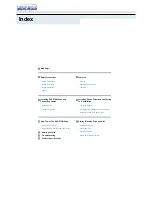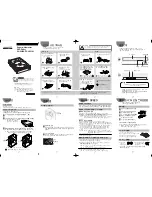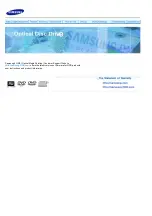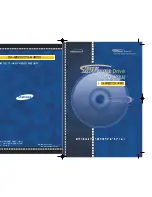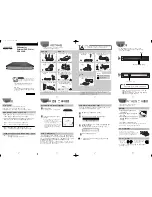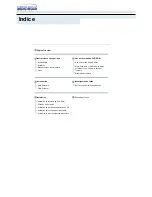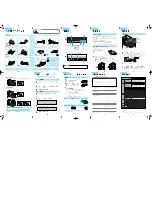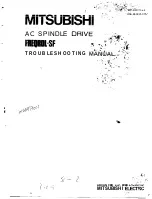
Unidrive M Modular Installation Guide
67
Issue Number: 2
Thermal protection circuit for the braking resistor
The thermal protection circuit must disconnect the AC supply from the
drive if the resistor becomes overloaded due to a fault. Figure 6-12
shows a typical circuit arrangement.
Figure 6-12 Typical protection circuit for a braking resistor
See Figure 6-1 and Figure 6-3 on page 57 for the location of the +DC
and braking resistor connections.
6.8.2 Braking resistor software overload protection
The Unidrive M software contains an overload protection function for a
braking resistor. In order to enable and set-up this function, it is
necessary to enter two values into the drive:
•
Resistor short-time overload time (Pr
10.030
)
•
Resistor minimum time between repeated short-time overloads
(Pr
10.031
)
This data should be obtained from the manufacturer of the braking
resistors.
Pr
10.039
gives an indication of braking resistor temperature based on a
simple thermal model. Zero indicates the resistor is close to ambient and
100 % is the maximum temperature the resistor can withstand. An OVLd
alarm is given if this parameter is above 75 % and the braking IGBT is
active. An It.br trip will occur if Pr
10.039
reaches 100 %, when
Pr
10.307
is set to 0 (default value) or 1.
If Pr
10.037
is equal to 2 or 3 an It.br trip will not occur when Pr
10.039
reaches 100%, but instead the braking IGBT will be disabled until
Pr
10.039
falls below 95 %. This option is intended for applications with
parallel connected DC buses where there are several braking resistors,
each of which cannot withstand full DC bus voltage continuously. With
this type of application it is unlikely the braking energy will be shared
equally between the resistors because of voltage measurement
tolerances within the individual drives. Therefore with Pr
10.037
set to 2
or 3, then as soon as a resistor has reached its maximum temperature
the drive will disable the braking IGBT, and another resistor on another
drive will take up the braking energy. Once Pr
10.039
has fallen below 95
% the drive will allow the braking IGBT to operate again.
See the
Unidrive M Parameter Reference Guide
for more information on
Pr
10.030
, Pr
10.031
, Pr
10.037
and Pr
10.039
.
This software overload protection should be used in addition to an
external overload protection device.
Braking Resistor Connections
This section details the rules that govern the connection of braking
resistors to a parallel application. The braking resistor should be
connected across the brake and +DC terminals.
1.
The brake terminals must not be connected together. Each module
must have its own resistor if required.
2. The resistor connected to each module must not have a value less
than the recommended minimum value for that module size.
3. The total power rating must not be less than the maximum expected
regenerative power.
4. If the DC buses are separate and the modules are all the same
rating, the brake resistors must match to better than 5% at all power
flows. (If the temperature coefficient and/or temperature rise of the
resistor is significant then the cooling must also match to ensure the
resistors are at similar temperatures and hence similar resistance
values.)
5. If the DC buses are common the brake resistors do not need to
match. However to use the drive's brake resistor protection
algorithm it must be set up to protect the most vulnerable resistor.
6.9 Ground leakage
The ground leakage current depends upon whether the internal EMC
filter is installed. The drive is supplied with the filter installed.
With internal filter installed:
56 mA AC at 400 V 50 Hz (proportional to supply voltage and
frequency)
18 µA DC with a 600 V DC bus (33 M
Ω
)
With internal filter removed:
<1mA
Note that in both cases there is an internal voltage surge protection
device connected to ground. Under normal circumstances this carries
negligible current.
6.9.1 Use of residual current device (RCD)
There are three common types of ELCB / RCD:
1.
AC - detects AC fault currents
2. A - detects AC and pulsating DC fault currents (provided the DC
current reaches zero at least once every half cycle)
3. B - detects AC, pulsating DC and smooth DC fault currents
•
Type AC should never be used with drives.
•
Type A can only be used with single phase drives
•
Type B must be used with three phase drives
If an external EMC filter is used, a delay of at least 50 ms should be
incorporated to ensure spurious trips are not seen. The leakage current
is likely to exceed the trip level if all of the phases are not energized
simultaneously.
Optional
RFI filter
Stop
Start /
Reset
Thermal
protection
device
Braking resistor
Drive
Main contactor
power supply
+DC
BR
When the internal filter is installed the leakage current is
high. In this case a permanent fixed ground connection must
be provided, or other suitable measures taken to prevent a
safety hazard occurring if the connection is lost
.
Only type B ELCB / RCD are suitable for use with 3 phase
inverter drives.
WARNING
WARNING
Содержание 09201760D
Страница 92: ...0478 0141 02...































